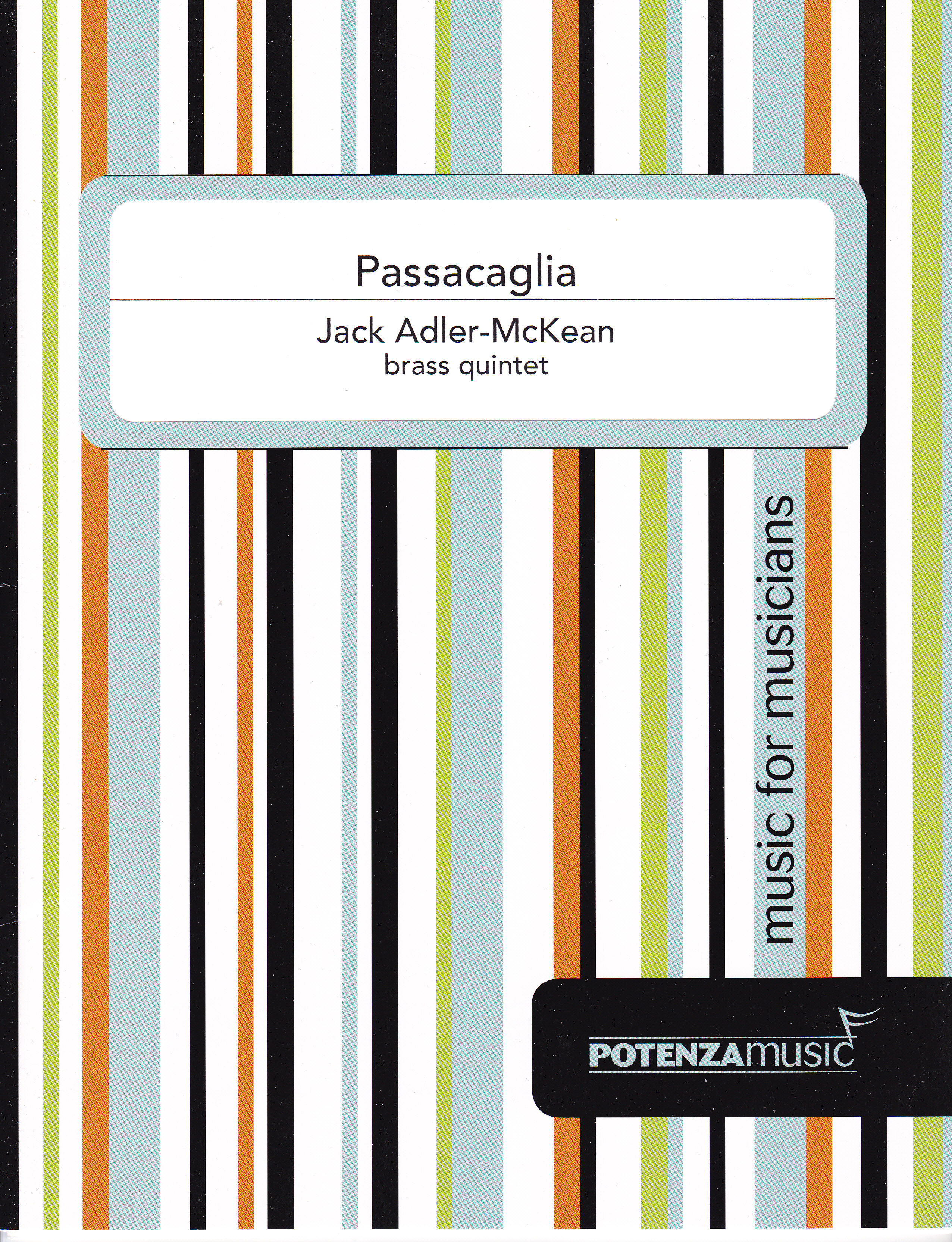Jack Adler-McKean
 Passacaglia:
Passacaglia:
Louisville, KY, United States
Publisher: Potenza Music Publishing
Date of Publication: 2013
URL: http://www.potenzamusic.com
Primary Genre: Brass Ensemble - 5 brass
 Passacaglia:
Passacaglia: Louisville, KY, United States
Publisher: Potenza Music Publishing
Date of Publication: 2013
URL: http://www.potenzamusic.com
Primary Genre: Brass Ensemble - 5 brass
Passacaglia is a new work by the young English composer and tubist Jack Adler-McKean. Adler-McKean is a recent graduate of both the University of Manchester and the Royal Northern College of Music. As of 2013 he is studying at the Hochschule für Musik, Theatre und Medien in Hannover, Germany. Adler-McKean states about the quintet: “Passacaglia is a work for brass quintet that tackles a style of composition rarely explored in brass chamber music repertoire. An ostinato subject is provided initially by the trombone, creating a quasi-minimalist chant-like atmosphere, as other motifs gradually evolve and emerge before disappearing back into the homophonic texture. A central trumpet duet suggests a new direction, yet hints of the original theme never fully subside. Another duet provides even greater agitation, but again fails to materialize as the theme gradually fades into the distance.” The work is primarily notated in 3/2 meter at a Lento tempo of half note=56. As stated the piece begins with the ostinato in trombone followed by a similar entrance in horn and finally a more complex line in tuba which completes the trio and concludes the first portion of the work. The ostinato is a half note and dotted whole note motive based on the descending half step, which is the dominant interval of the entire work. Section two introduces all five instruments with trumpets in cup mute. The motion here is still primarily half notes with quarter note motives interspersed. The third section, comprised of the aforementioned trumpet duet, is much more complex rhythmically but still based upon the descending minor second introduced in the ostinato. Following a short interlude a tuba/horn duet ensues with the most complex rhythmic and harmonic work of the piece. As the duet reaches its conclusion and climax, the trombone ostinato returns joined by a trumpet duet with Harmon mutes, stem removed. The color at the end is quite interesting. Though endurance is not an issue, there are challenging ranges in trumpet, horn and tuba parts. While trumpet one ascending to c3 is probably not an issue, trumpet two climbs to a2 and b-flat2 and may be difficult for younger players. The horn part ranges up to b2 and includes flutter tongue. Tuba is most challenged with flutter tonguing up to e1. Parts are clearly notated with no page turns. Although I am not in complete agreement with the composer’s assertion that this style of composition is rarely explored in brass chamber repertoire, I do recommend this work as a good challenge for a college level quintet or a professional quintet looking for a recital quality composition. -Thomas Zugger Capital University
Reviewer: Review Author
Review Published July 17, 2023
Review Published July 17, 2023